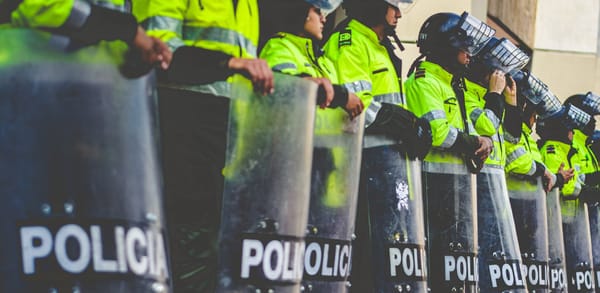Things everyone should know about COVID-19 (Part 2: Transmission & Protection)
This piece highlights important things about how COVID-19 is transmitted and what variant-proof measures can be taken to reduce the risk of becoming infected or reinfected.

This piece highlights important things about how COVID-19 is transmitted and what variant-proof measures can be taken to reduce the risk of becoming infected or reinfected.
First published: Nov 2022.
This will be at a very high level without going into too much scientific jargon and references will be left for the end. If you missed Part 1 (on how the virus and immune system work, including how long you are contagious for), you can find it here.
W hen you breathe, talk, cough, sing, exercise or anything else that involves exhaling, particles (aerosols) get released into the air that contain contents from your respiratory tract, including viruses that you may be infected with that are replicating there.
Exercise and singing produce large amounts of aerosols from your mouth which is why you often heard about superspreader events in choirs and gyms.

CREDIT: ADOBE STOCK/RAINER FUHRMANN
The easiest way to think about how the virus moves through the air is cigarette smoke particles move very similarly to how aerosols from your breath move. If you are outside on a cold winter day you can actually see the condensation when you breathe out or talk.
If people could actually see COVID-19 virus floating in the air, I think people’s behaviour would be very different today. Someone who is contagious expels the particles containing virus into the air and with poor ventilation, the particles can stay floating for hours.

Phases involved in airborne transmission of respiratory viruses. | Figure from: Wang et al. (2021). Airborne transmission of respiratory viruses. Science 373(6558) / CREDIT: N. CARY/SCIENCE
The infected person could leave the room and you could walk into an empty room and breathe in the virus particles that you didn’t even know were there.
When is enough enough?
If you inhale enough particles, the virus can enter the cells in your respiratory tract and infect them, giving you COVID-19.
The closer you are to a person who is infected, the more concentrated the infected aerosols would be so the more virus particles you would inhale and the less time it would take to receive an infectious dose.
Imagine standing in front of someone speaking to you and them blowing cigarette smoke towards you with every word. The closer you are to the person, the stronger the smell of the smoke will be. If you are on the other side of the room, there might not be a lot of smoke where you are at first, but the levels of smoke will slowly build up in the room over time. It is possible to become infected at both short and longer distances.
How can you reduce the chance of becoming infected then? You want to reduce or eliminate the amount of virus particles that you inhale which can be achieved in multiple ways. Thankfully unlike vaccines, these methods continue to work well even when the virus mutates.
Ventilation
Ventilation is how much fresh outdoor air is brought into a location which dilutes the concentration of the virus particles in the air. The better the ventilation, the faster the virus particles get diluted.
One possible way to do this is open windows to literally allow fresh air in from the outside. Some buildings have mechanical ventilation in the form of ventilation, heating, and air conditioning systems (HVAC) which can bring in varying amounts of fresh air from outside. It is important to ensure that HVAC systems aren’t set to recirculate old, stale air and are maintained and functioning properly.
One way to indirectly measure ventilation in a space is using a carbon dioxide (CO2) monitor which can measure how diluted the air is. Since people exhale CO2, the level of CO2 in a space will increase to higher levels if ventilation is poor since it is not being diluted as much by fresh air. CO2 monitors measure in parts per million (ppm) and are a quick way to see if ventilation is very poor.
The more people you have in a room, the higher the level of CO2, and if you are in an empty room with high CO2 levels, that is a good indicator that ventilation is poor. The CO2 levels in the air outside fluctuate but are approximately 415 ppm. It depends on how many people you have in a space, but typically CO2 levels indoors less than 800 ppm may indicate decent ventilation.
It is vital to actually measure and monitor air quality to ensure systems are actually functioning properly and to the level they are supposed to be, otherwise you will not know if a system has failed, is not configured properly, or not providing adequate air quality.
In Canada for instance, under the Ontario Workplace Regulation 833¹, employers have a duty to “protect workers from exposure to hazardous biological or chemical agents”. CO2 levels have a time-weighted average (TWA) over the course of a day of 5,000 ppm, above which would constitute a workplace hazard.
When you are in a space with others, you are sharing their air. To give you a real-world example, a student classroom was measured at over 5,500 ppm of CO2 which is extremely poor ventilation (and a safety hazard even outside a pandemic). That means 13% of the air each of those students inhales comes out of other people’s mouths!
Another way to put it is that each of those students is breathing in 55 litres of other people’s breath every hour.
That is a lot of virus particles to breathe in if anyone was infected and no other mitigations were in place.
PMP XTRA | Shared Air Calculator using CO2 Levels
Click here to calculate the Amount of Shared Air in an Indoor Space using CO2 Levels.
In addition to ventilation, you can also filter particles to remove them from the air. You have probably heard of portable HEPA filters which can remove 99.97% of airborne particles 0.3 microns in size.
HVAC systems can usually be fitted with filters which best practice recommends upgrading to MERV 13 filters for most indoor settings. When the air in the HVAC system returns to be heated or cooled, the filter will remove virus particles before the air goes back into the rooms.
Over time this can reduce the number of virus particles in a room.
You can make your own portable filter called a Corsi-Rosenthal (CR) box² which uses a box fan and 4-5 MERV filters duct-taped together which you can find multiple build videos and tutorials online.




An important point to remember is that filtration systems help reduce the build-up of particles in a space, so it can reduce the overall risk of people becoming infected.
Just having a HEPA filter on the other side of the room while you are in close proximity to someone who is infected, where concentrations of the virus are the highest, will likely not prevent you from inhaling a high enough dose to become infected.
While airplanes tend to have good HEPA filtration systems, they will not on their own prevent the person sitting beside you from infecting you.
What if I don’t control the ventilation or filtration in some of the spaces that I visit? Thankfully, there are also personal filtration options available, more commonly known as masks!
Masks
Masks filter the air before entering or exiting your body so can both protect the wearer from becoming infected by others and also help protect the infected from transmitting the virus to others since the virus gets filtered in both directions.
The important thing to remember is that since COVID-19 is transmitted through the air, your mask needs to be well-fitting so that the air doesn’t just go around the sides or the top unfiltered into your mouth, nose, and lungs.
Cloth and medical/procedure masks are not designed to protect from airborne transmission, so while they may filter some of the air, it is like using a boat with holes in it, where water is leaking into the boat and will eventually sink.
To protect against aerosols, you need something designed for that purpose such as N95/KN95/KF94/FFP2 and even N99/FFP3 respirators.
Now becoming popular are elastomeric respirators that provide a tight seal around your face using various materials such as silicone that are more likely to fit well on your face.
These respirators also provide very high breathability and can be cleaned and reused with long-lasting filters, so they cost much less over time than disposable masks.



Remember that the fit of the mask is key. Even if the mask material can filter 95% or 99% of particles, if there are gaps on your face in how the mask fits, some air will pass through unfiltered.
If you don’t have access to or cannot afford something better than a medical/procedure mask it is possible to buy or make a reusable mask fitter that will provide a tighter seal for your mask.
It is also possible to disinfect the air, where you are inactivating the virus using ultraviolet light. These systems typically shine UV light in the upper part of a room to neutralize viruses as they circulate through that space but the light does not shine on people in the lower part of the room. Since some wavelengths of UV light are harmful to humans, these systems should be professionally installed.
COVID is airborne
The COVID-19 variants have become more and more transmissible which means you likely need a lower dose to become infected than before so even more reason to ensure you have adequate ventilation and filtration.

CREDIT: SAM HESTER
Even though there is less risk of infection when you are outdoors because the ventilation is great, you will still be breathing in some aerosols from others if you are close to a group of people. If someone is infected it could be enough for you to become infected too. This summer there was lots of outdoor transmission happening at crowded concerts and other venues.
While scientists were able to figure out that COVID-19 spreads in aerosols through the air early in the pandemic, governments and public health agencies took much longer to acknowledge this, and some continue to downplay the importance of airborne transmission.
It turns out that other respiratory viruses like flu and colds are also transmitted through the air, so improving the quality of the air we breathe not only helps reduce the chances of getting infected by COVID-19 but by all the airborne viruses.
We spend a lot of time and effort to treat and filter water to make it safe to drink, it is strange that we don’t invest in, and demand clean air as well. If we had a better standard for air quality in buildings that was enforced and required regular monitoring to ensure it was working properly like we do for clean water, the amount of sickness in the workplace and in schools would decrease, and children would miss less school.
Studies have shown that when CO2 levels in a classroom increased from 600 ppm to 1,800 ppm, the average score on cognitive performance tasks decreased by 23%. Good air quality does more than just prevent people from getting sick but allows them to better concentrate and improve their cognitive abilities.
For example, when schools in Italy increased their ventilation it reduced the risk of infection by 80% compared to classrooms with only natural ventilation.
This seems like a worthwhile investment to make in something that works for multiple pathogens and viruses no matter how much they mutate and change and will continue to be helpful even after the pandemic is done.
Isn’t COVID just over?
Why do we even care about preventing infection and reinfection? Isn’t COVID-19 just a cold now? Unfortunately, this seems to be the most important component of infection that people generally do not understand.
Getting even a mild infection can and has caused long-term damage and potentially a lifetime of suffering in hundreds of millions of people around the world and still rising.
While vaccines can help reduce the severity of disease and long-term complications, even 1 in 10 vaccinated people who got infected went on to develop Long COVID symptoms.
Infection puts people at increased risk of heart attack, stroke, cardiovascular issues, blot clots, brain damage, neurological conditions, Alzheimer’s, diabetes, auto-immune issues, reactivating dormant viruses and many more even months after infection.
This happens in both adults and children, and even with mild infections. Much more information is in the references below.
So many people have developed Long COVID that the financial press has even started writing about the impact on the economy and all of the people who have permanently left the job market.
Letting the virus run freely through communities will allow the virus to continue mutating at a rapid pace and have major economic and healthcare implications for the future.

If you missed Part 1 (on how the virus and immune system work, including how long you are contagious for), you can find it here.
GOING FURTHER:
Airborne Transmission & Clean Air References
Long COVID References

|

|

|
— AUTHOR —

|
▫ Dr Jeff Gilchrist, Biomedical researcher, data scientist, and finder of large prime numbers. |
Sources
- Text: This piece was first published as a Twitter thread and turned into the above article on 26 November 2022 with the purpose of reaching a larger audience. It has been minorly edited and corrected, and published with the author’s consent. | The author of the tweets writes in a personal capacity.
- Cover: Adobe Stock/freshidea. | COVID transmission.






[Read our Comments Guidelines]